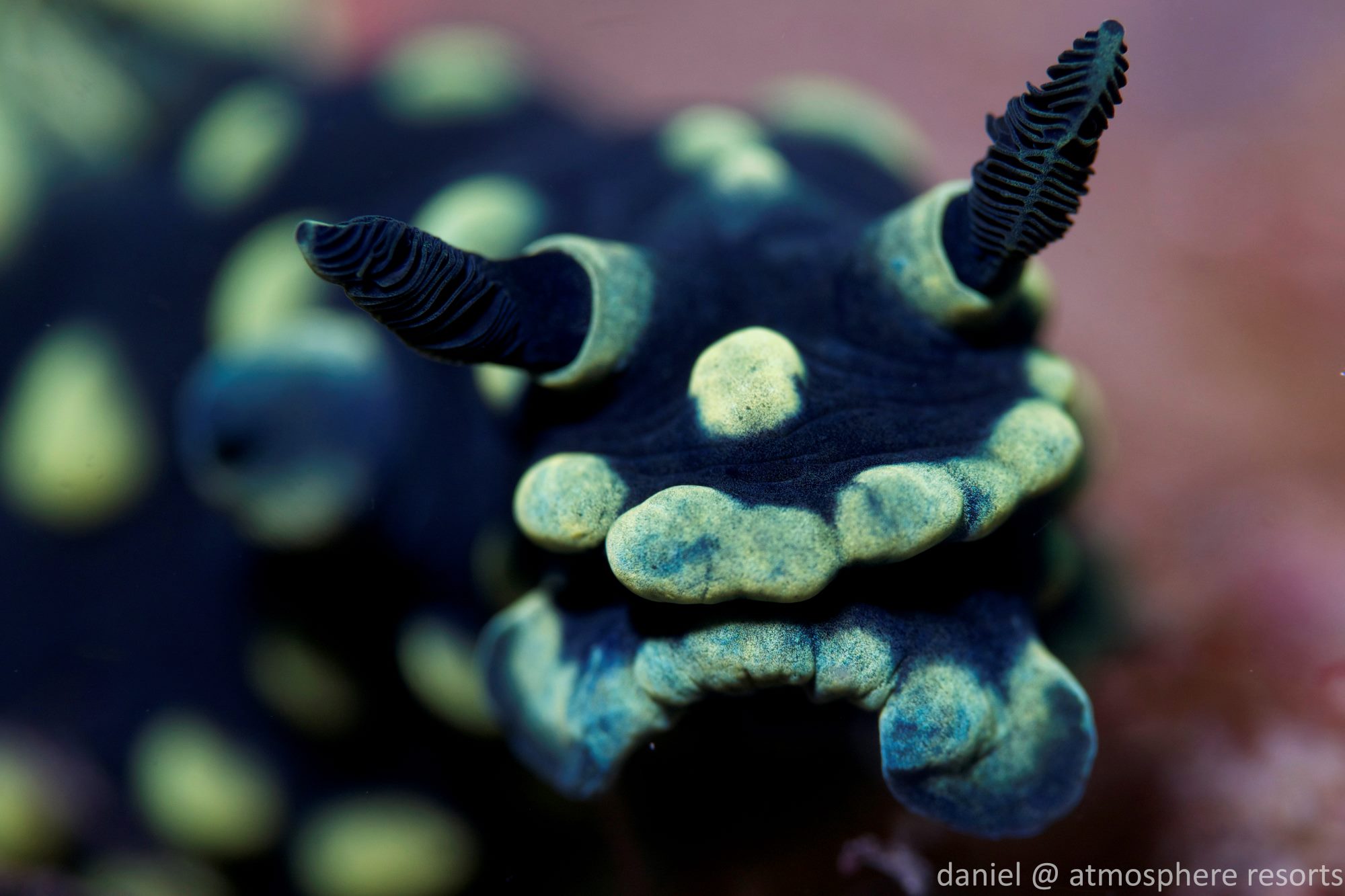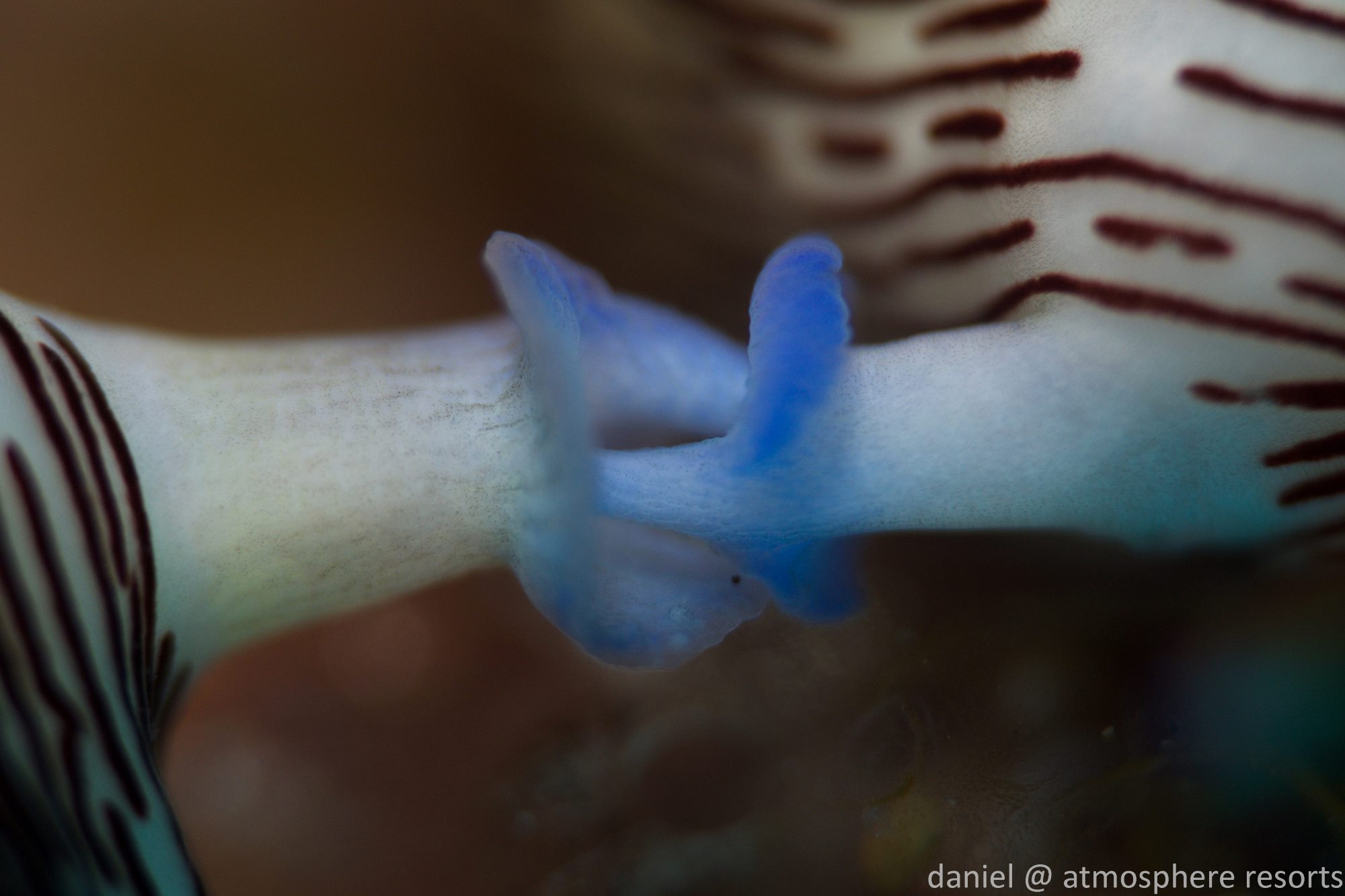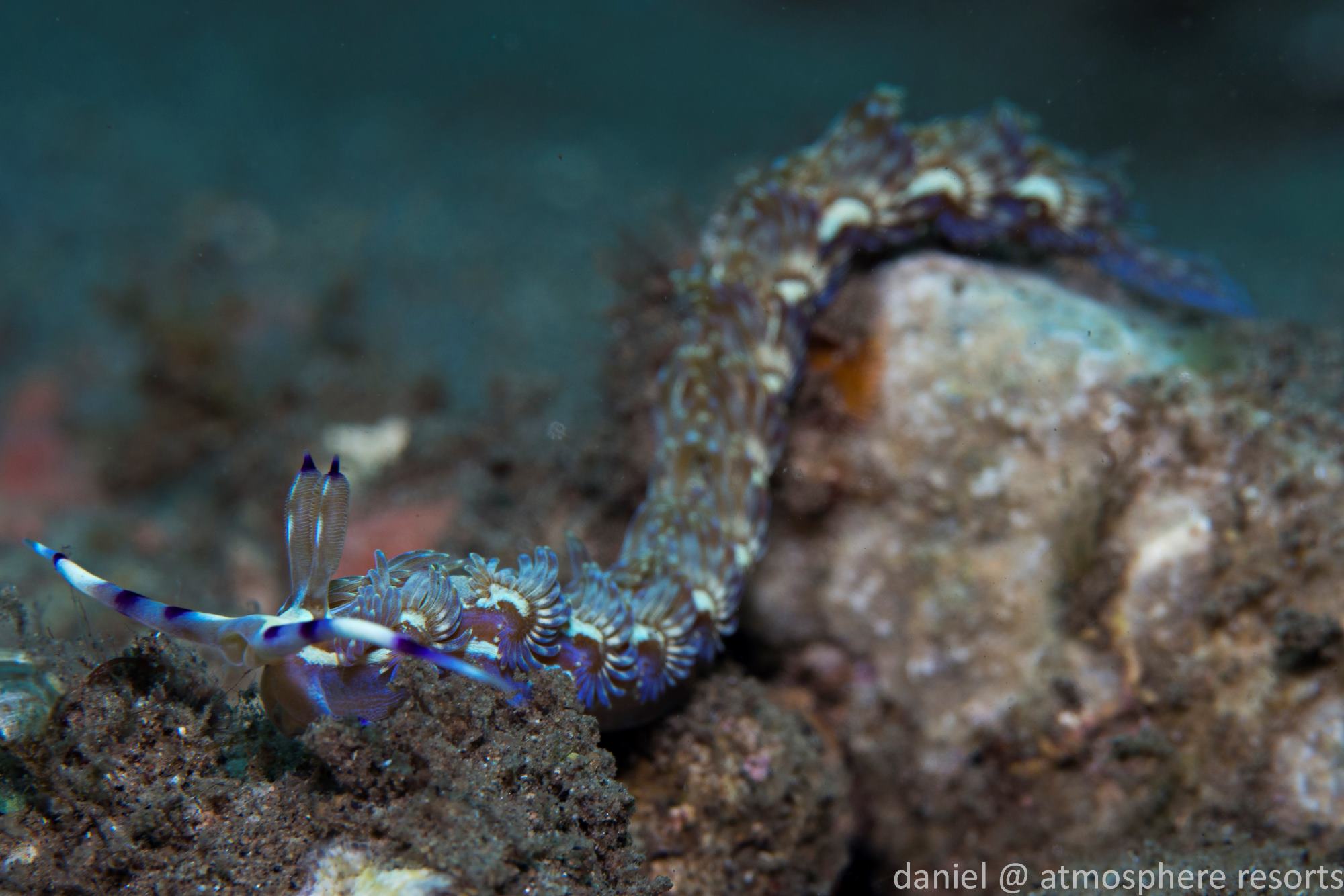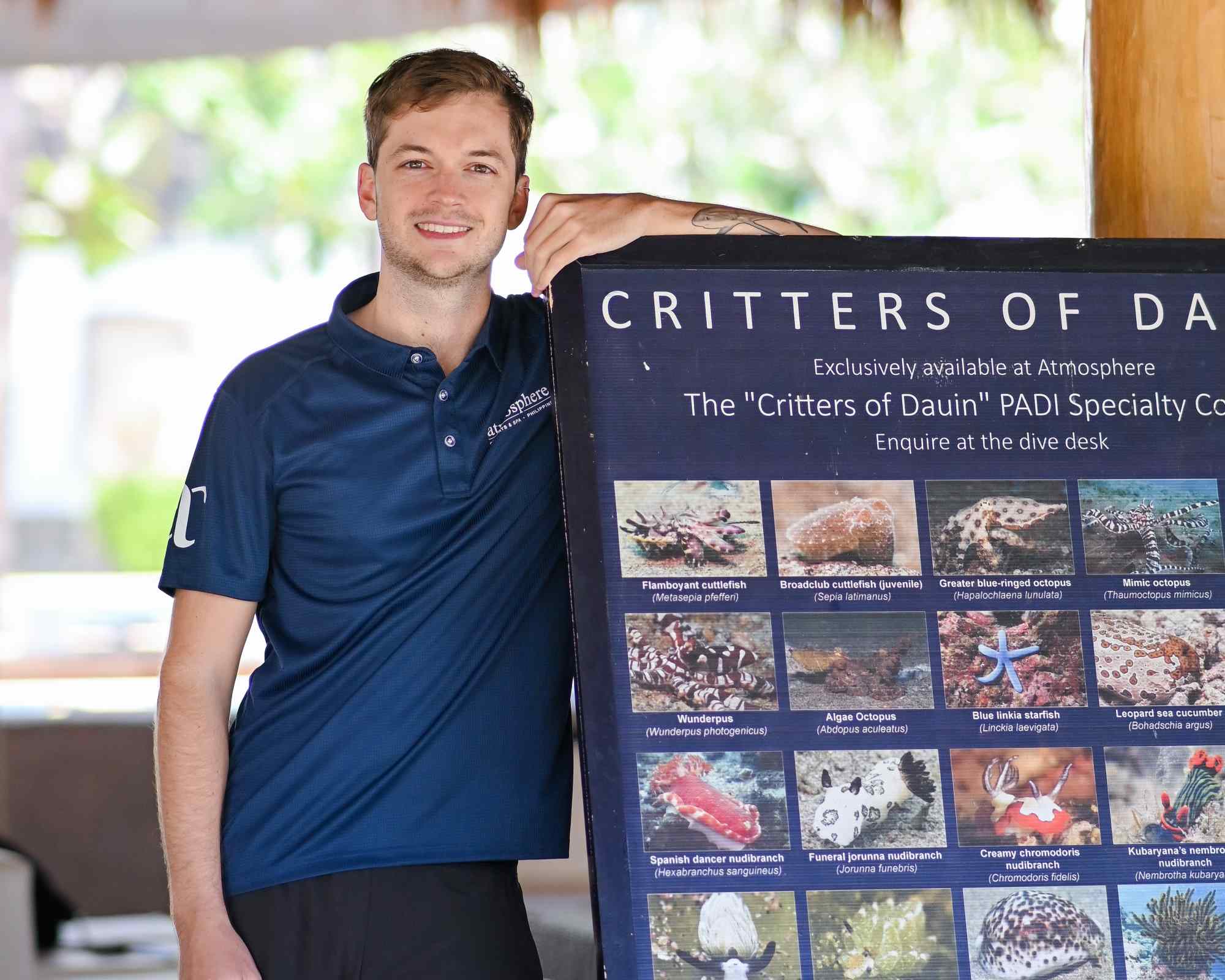Nudibranchs are a firm favourite of divers and underwater photographers here at Atmosphere. They are fascinating marine creatures renowned for their vibrant colours and unique adaptations. These soft-bodied molluscs inhabit a variety of ocean environments and display an array of intriguing behaviours and characteristics. So let’s dive in and take a look at 10 cool facts about nudibranchs!
- The word nudibranch means “naked gills”
- They are found throughout the world’s oceans
- Nudibranchs navigate using highly sensitive appendages, called rhinophores
- Nudibranchs steal the defenses of their prey
- Nudibranchs don’t live long!
- Nudibranchs are simultaneous hermaphrodites
- Some nudibranchs are solar-powered!
- Some nudibranch species are cannibals
- Looking for a tasty snack? Try a nudibranch!
- Do you hear that tapping sound? It might be a nudibranch!
1. The word nudibranch means “naked gills”
The word “nudibranch” originates from the Latin word “nudus,” meaning naked, and the Greek word “brankhia,” meaning gills. Nudibranchs are a group of soft-bodied marine gastropod molluscs known for their colourful and often intricate patterns. They lack a protective shell and their gills are exposed, hence the term “naked gills”.

The word nudibranch means “naked gills”
2. They are found throughout the world’s oceans
There are more than 3000 species of nudibranchs, and scientists estimate there are another 3000 yet to be discovered! They are found in tropical and temperate seas as well as Antarctica. Although they are most common in the shallows, they have been found as deep as 2500m!
3. Nudibranchs navigate using highly sensitive appendages, called rhinophores
Nudibranchs sometimes have eyes, but they are only useful at telling light from dark. How do they navigate? Nudibranchs have two “horns” located on the top of their head which are called rhinophores. These are chemically sensitive, allowing nudibranchs to find food and mates based on the chemicals they give off.

Nudibranchs use sensitive chemical receptors called rhinophores to help them navigate
4. Nudibranchs steal the defenses of their prey
Nudibranchs are popular with divers and underwater photographers due to their vibrant colours and patterns. These bright colours serve as a warning to predators that nudibranchs are armed with toxins and other defences. Where do these defences come from? Some species of nudibranchs steal the stinging cells of jellyfish, sea anemones and coral that they feed on! Others can also ingest toxins from sponges and become toxic and inedible.
5. Nudibranchs don’t live long!
Their lifespan varies widely, with some living less than a month, and others living up to one year. Nudibranchs need to make the most of their short lives!
6. Nudibranchs are simultaneous hermaphrodites
Nudibranchs have an intriguing reproductive strategy. They are hermaphrodites, meaning they possess both male and female reproductive organs. This unique feature allows them to mate with any other individual of their species that they encounter. While mating they fertilise each other, although a nudibranch cannot fertilise itself. They then both lay eggs in a beautiful spiral.

Nudibranchs are simultaneous hermaphrodites. During mating the two individuals fertilise each other
7. Some nudibranchs are solar-powered!
These species harvest algae from plants or coral and house the algae within their bodies. The algae produces its energy from light via photosynthesis, which is then used by the nudibranch.

Nudibranchs like the Pteraeolidia sp. are solar-powered!
8. Some nudibranch species are cannibals
Nudibranchs are carnivores and their diet can be highly specific, depending on the species. They mostly feed on sponges, hydroids, and bryozoans. Some species eat other nudibranchs, even those of their own species! Nudibranchs feed using powerful jaws or sometimes with digestive enzymes.
9. Looking for a tasty snack? Try a nudibranch!
Some humans actually eat nudibranchs. Chileans and some islanders in Russia and Alaska roast or boil sea slugs and sometimes eat them raw. It has been described as “chewing an eraser.”
10. Do you hear that tapping sound? It might be a nudibranch!
At least two species of nudibranchs can actually make sounds that are audible to humans. A scientist in 1884 reported sounds from two species in an aquarium that sounded like wire tapping the side of a jar, repeated at intervals. It is unknown whether these sounds are for defence, attracting a mate, or other reasons.
Take the Critters of Dauin specialty, unique to Atmosphere!
Want to learn more about the incredible critters we see here in Dauin? Then the PADI Critters of Dauin specialty is perfect for you! Created by our in-house marine biologist, this specialty is unique to Atmosphere. It lets you into the secrets our guides use to locate even the smallest and most cryptic of critters. For more information, check out our previous blog post about the PADI Critters of Dauin specialty here.

Take the PADI Critters of Dauin specialty with me!
For bookings and enquiries about the PADI Critters of Dauin specialty, please email [email protected]
Want to know more about the incredible critters we see here along the Dauin coast and Apo Island? Check out the critters page on our website.







